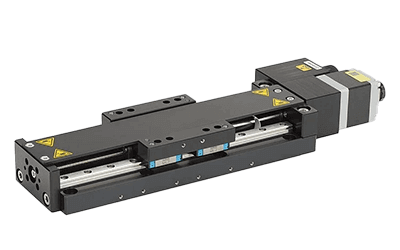What Is a Linear Stage?

A linear stage is a device featuring a table mechanism powered by a linear servo motor. It integrates full-closed control with a linear encoder for position detection, forming an electromechanical direct-drive system. This system ensures precise positioning and efficient operational performance.
Linear stages can combine two orthogonal axes into XY axes, add a vertical Z-axis, or a rotational θ-axis, creating multi-axis stages like XY, XYZ, and XYZθ stages, suited for specific applications.
The direct-drive motor eliminates the need for intermediary mechanisms, enhancing mechanical performance, saving space, and reducing maintenance needs. This design also allows for long-distance travel.
Utilized primarily in precision positioning and transportation tasks, linear stages offer high-precision positioning and stable speed control, surpassing mechanisms like ball screws or belts.
Applications of Linear Stages
Linear stages are vital in applications demanding high precision and speed stability, such as:
- High-accuracy devices like laser processing machines, semiconductor exposure systems, and probers.
- Stable speed devices like coaters and image inspection systems.
- Applications requiring high acceleration with minimal vibration, such as vibration testing machines and simulators.
They are also utilized in long-stroke transport devices, high-speed handlers, and material feed-out mechanisms in press machines.
Functioning of Linear Stages
A linear stage comprises a linear servo motor, a linear encoder for accurate position detection, and linear bearings for guiding movements. A servo driver controls the motor.
In a typical setup, the magnet unit is stationary, and the coil unit is mobile. Current through the coil creates a magnetic field, inducing propulsive force along the magnet unit, enabling movement.
High-resolution encoders paired with servo drivers ensure precise positioning and speed stability. The accuracy of linear stages also hinges on the running accuracy of linear bearings and the installation surface’s precision, impacting straightness and smooth movement.
Adhering to the Abbe principle, the linear encoder should be near the work point. As linear servo motors generate heat, efficient heat management is crucial to maintain accuracy and prevent thermal expansion effects.